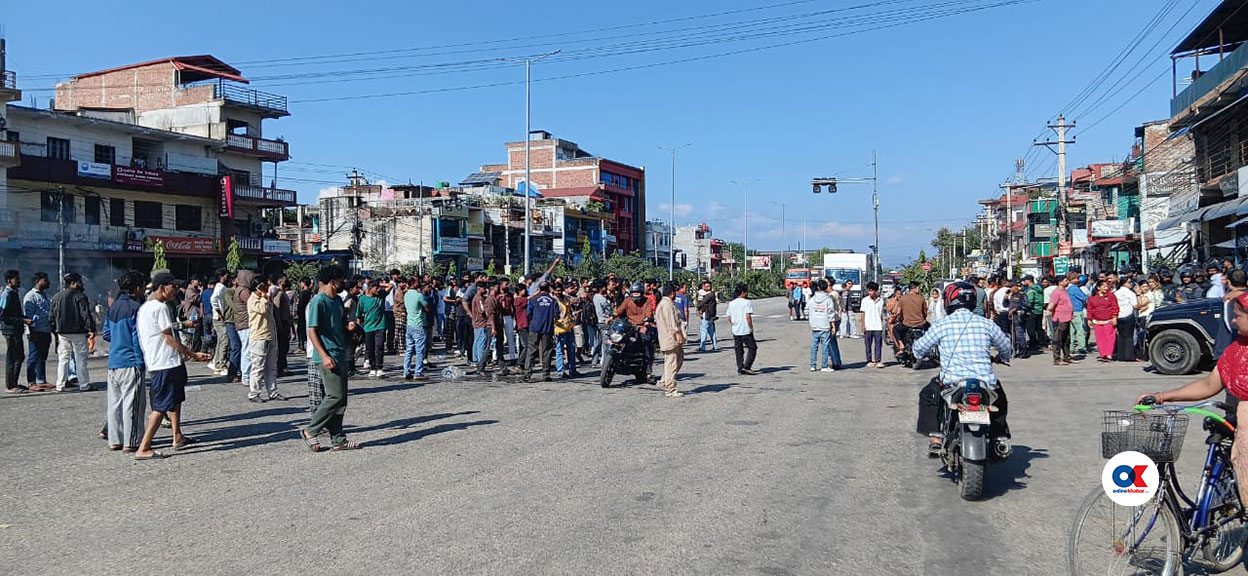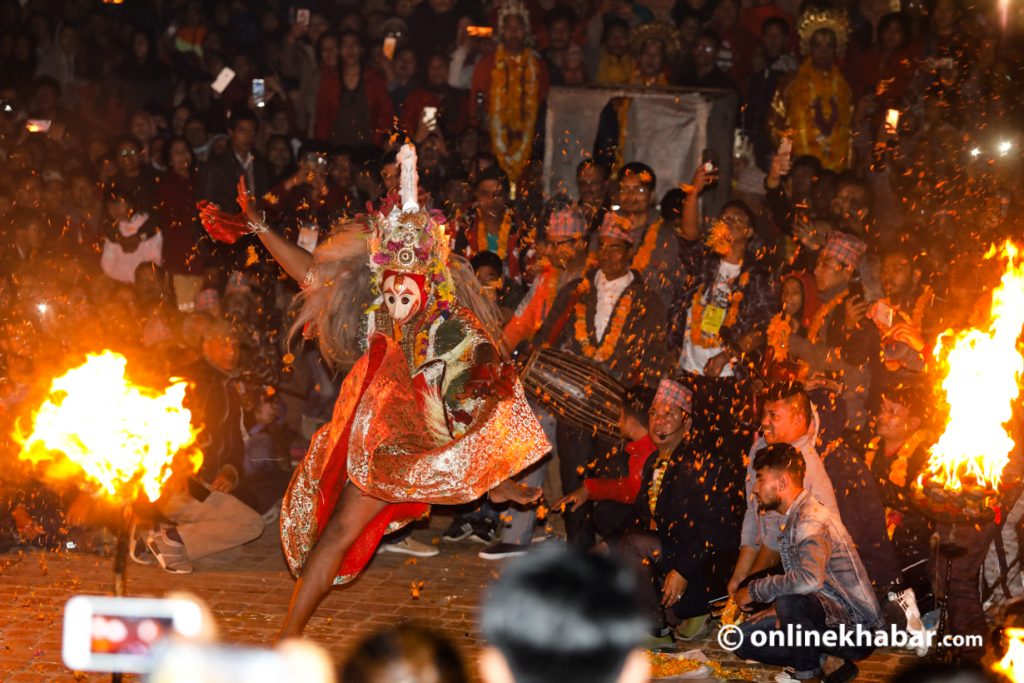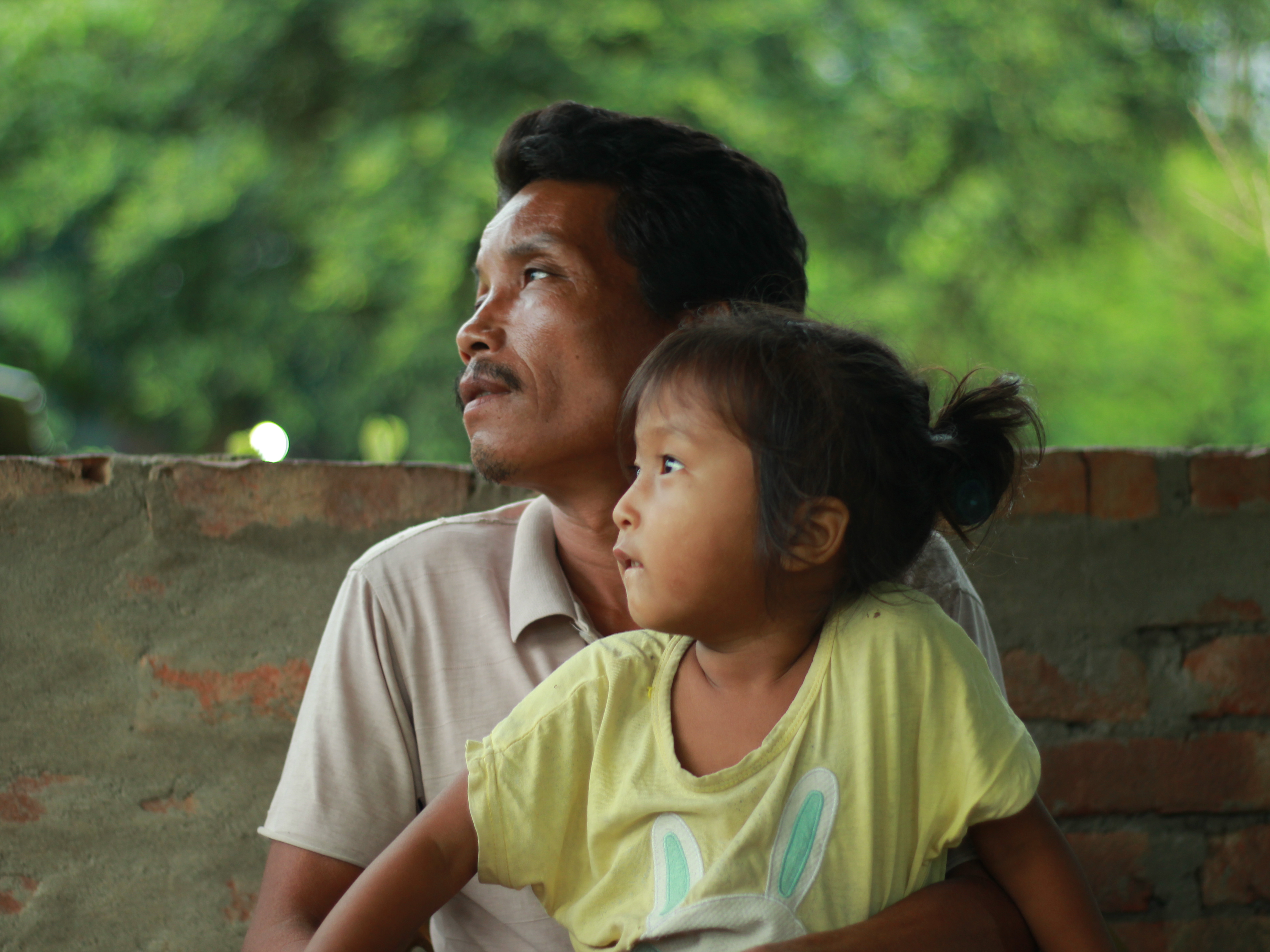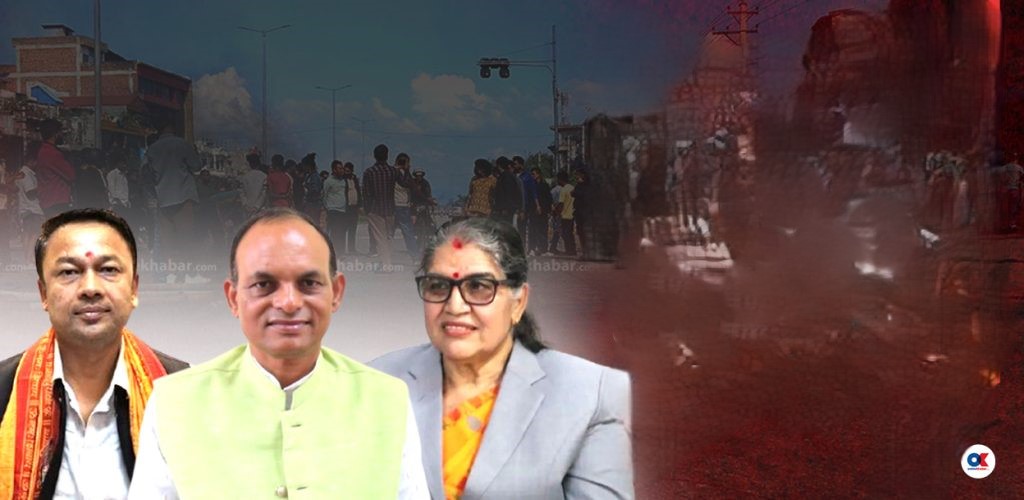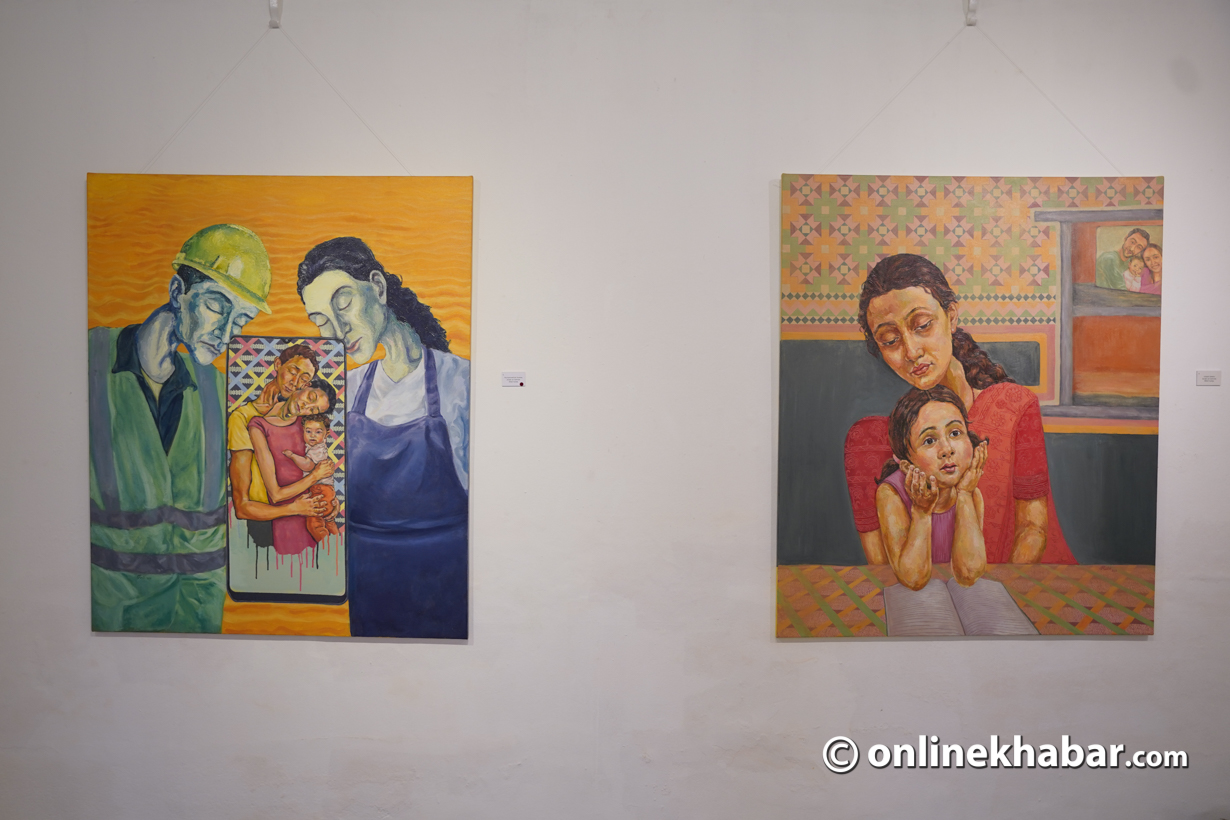
Kathmandu, July 5
Riti Maharjan’s third solo exhibition, which was being showcased at Siddhartha Art Gallery, concluded on Wednesday.
The exhibition titled Awaiting depicted the woes of family and society how migration has adversely affected the psychology of people and the physical changes that are obvious in the society.
Maharjan’s figurative paintings in the exhibition show the distress, alienation, sadness, loneliness and detachment due to being away from one’s family and country. Her characters for the exhibition are inspired by the people and culture of Bhramin society in Major Gaun in Rainas municipality, Lamjung.
She has specifically focused on the wall art done by the women in this society. These wall art or murals are created during the time of celebration such as Haribodhini Ekadasi. The women decorate the front walls, doors and Tulasi Maath (Shrine where tulasi is planted and worshipped) with different geometric patterns and colours.
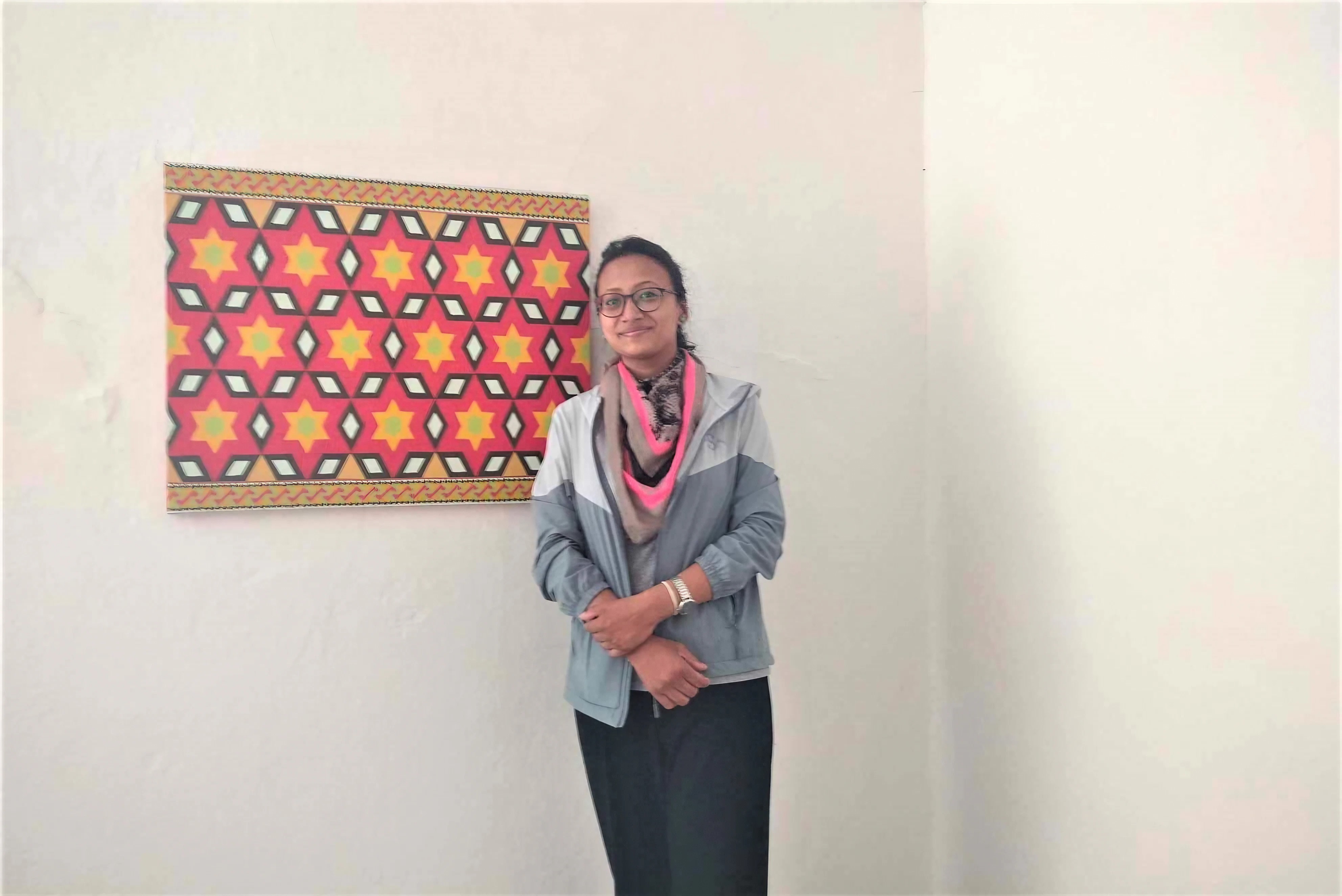
Through her exhibition, she has paid homage to this traditional art, which is on the verge of extinction as concrete houses have replaced such traditional mud houses. Along with that, the younger generation of women are not accustomed to this tradition.
“I visited my husband’s house and I got curious about the artworks done on the walls of the houses,” says Maharjan, “Being an artist I knew this is an important aspect in Nepali art where baramin women are creating such art which was rarely known.”
During her time in the village, she realised that only old age people and women were living in the village. She also noticed how the 2015 earthquake led the people there to build concrete houses. All these aspects of changes urged her to document the remaining of this art form through her paintings.
“In a situation where society has not recognised the artistic sensibilities and expression of rural women,” she says, “I have used their motifs and patterns and incorporated them with my contemporary subjects.”
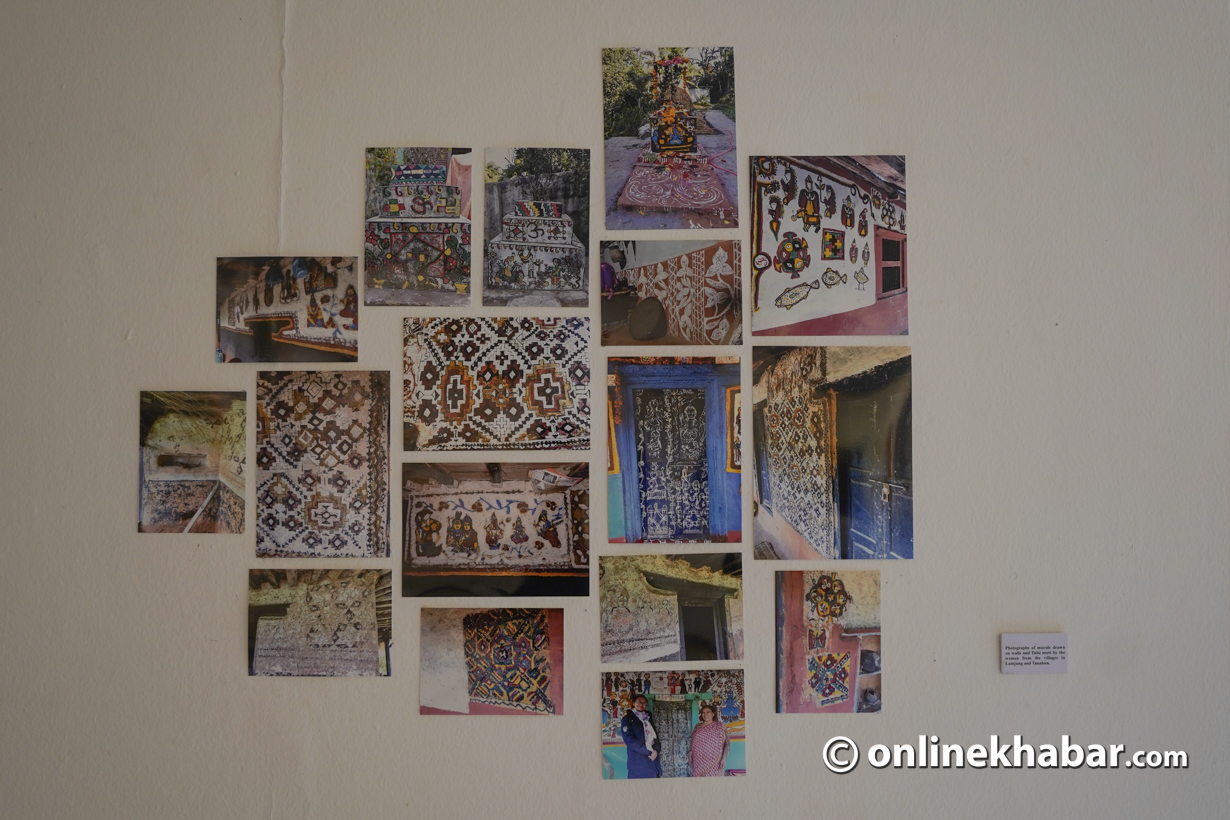
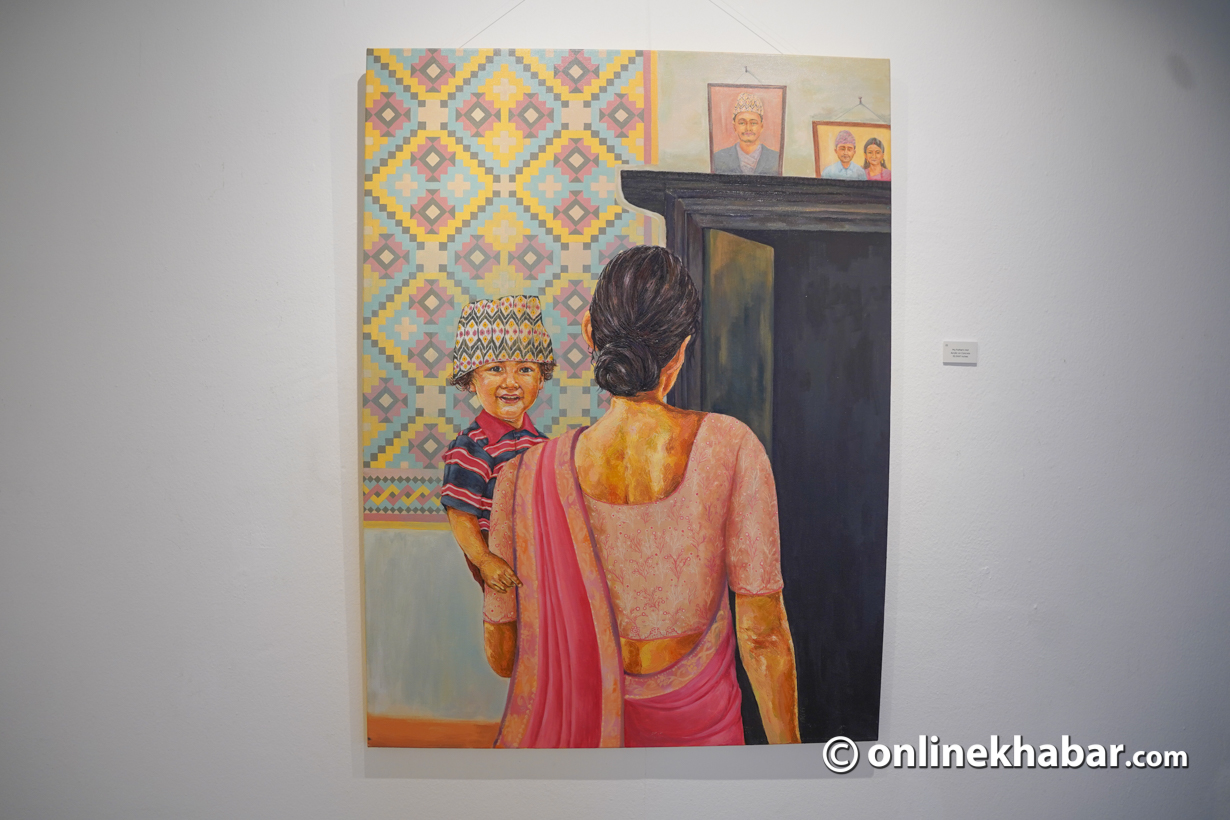
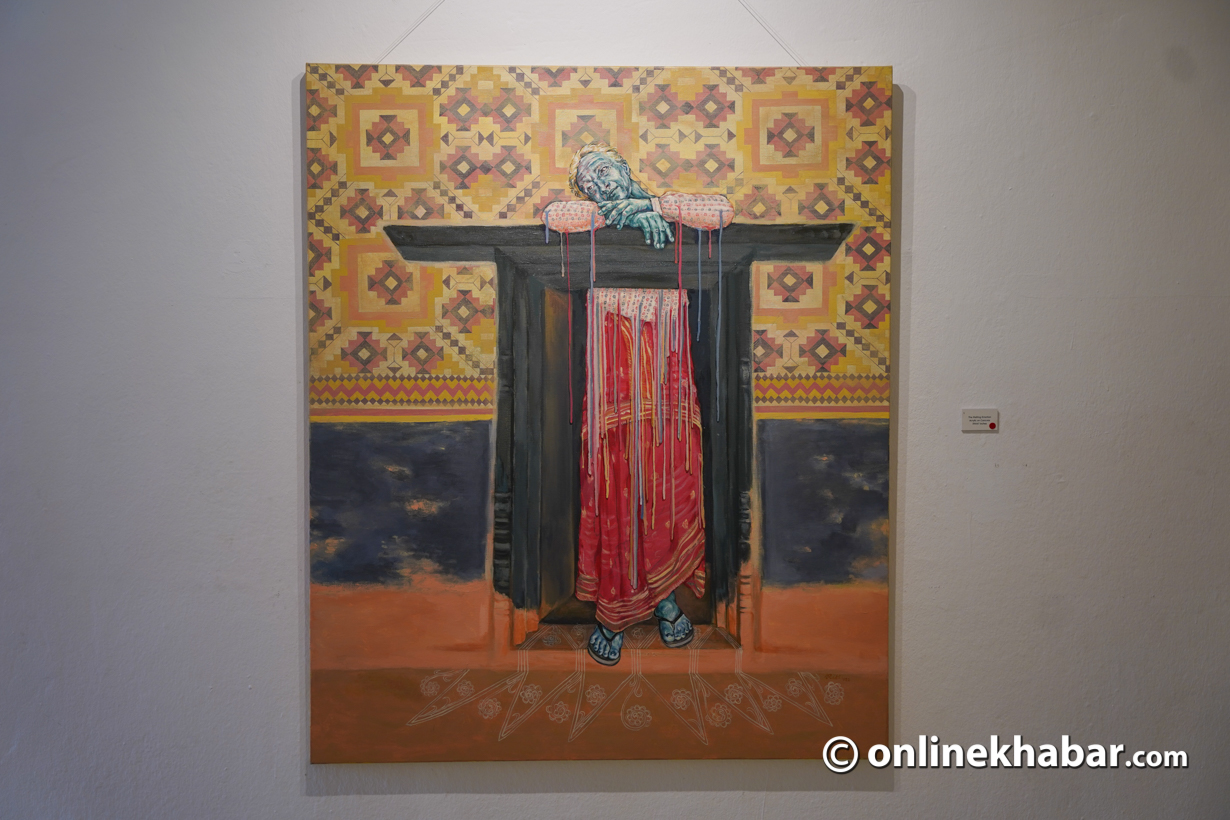
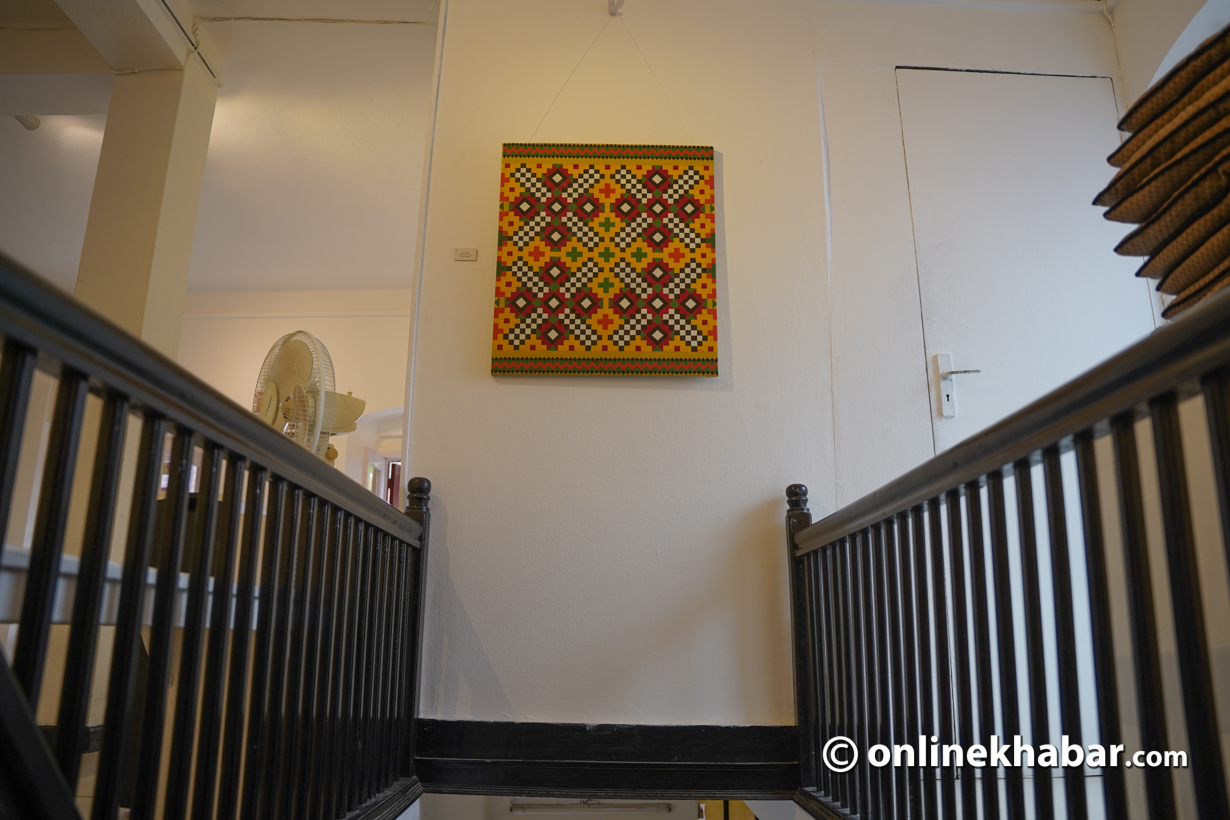

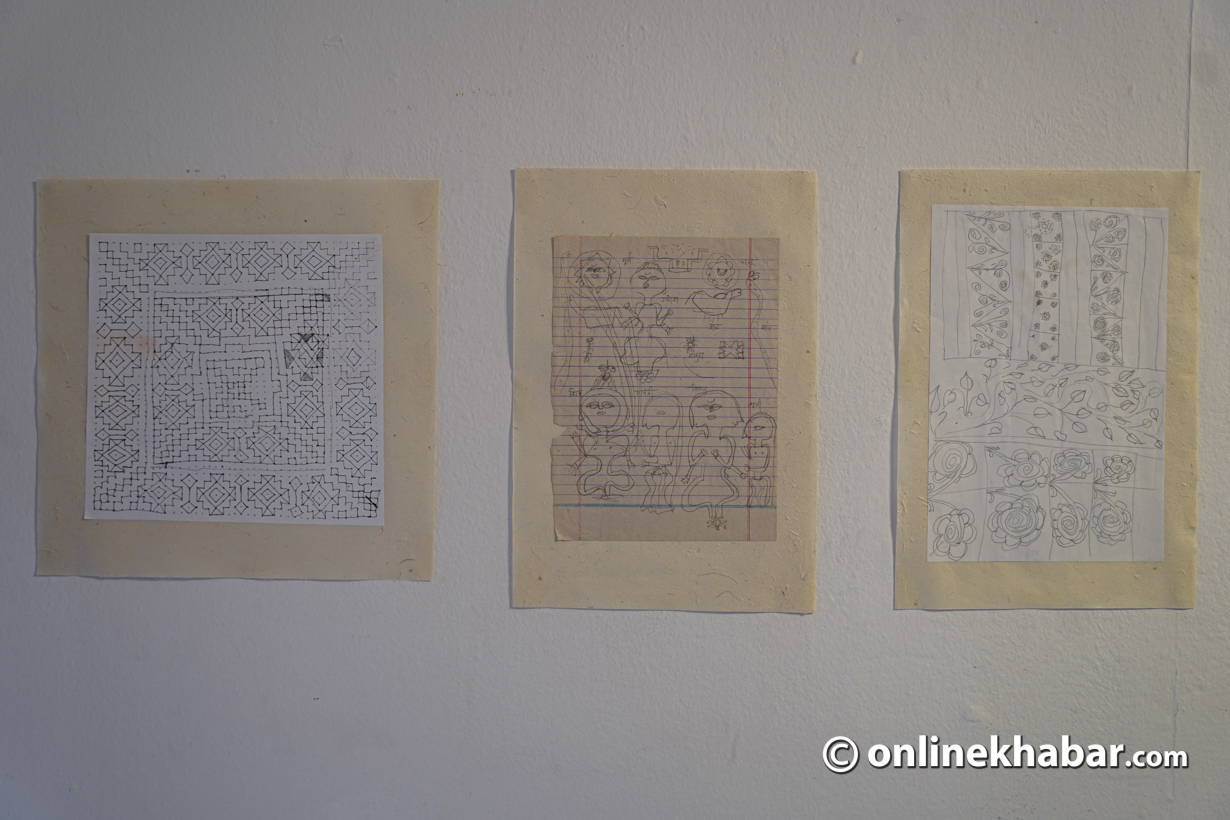
All photos: Chandra Bahadur Ale








